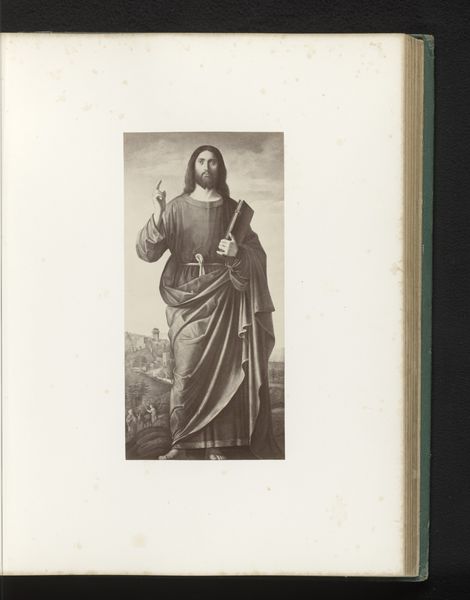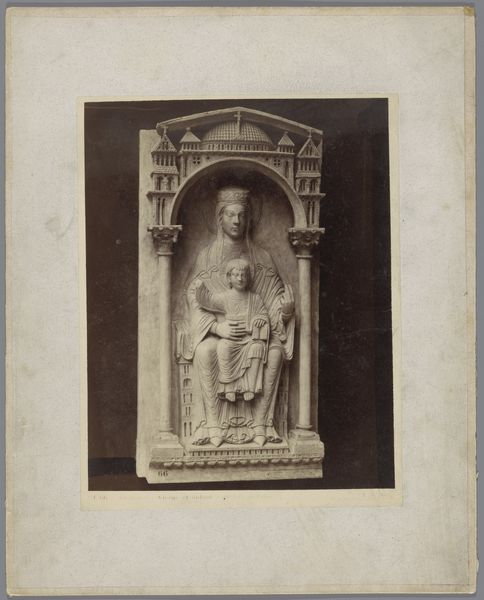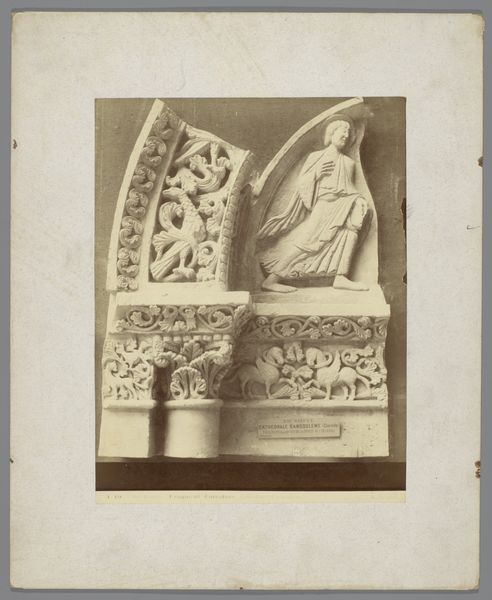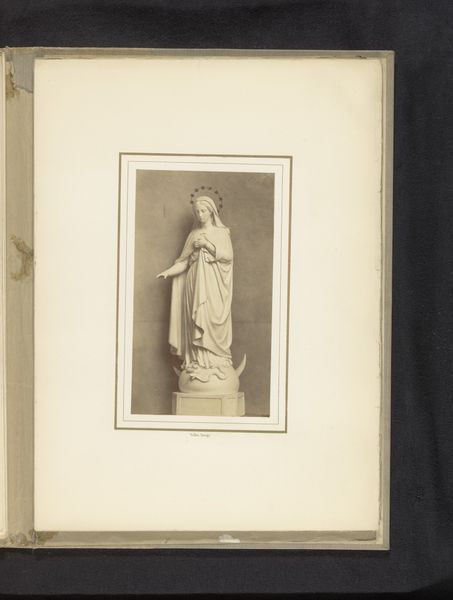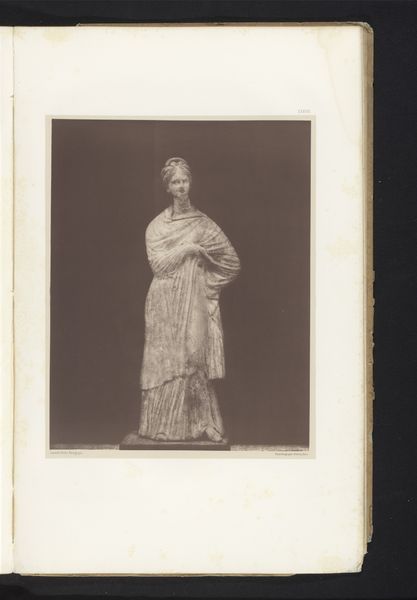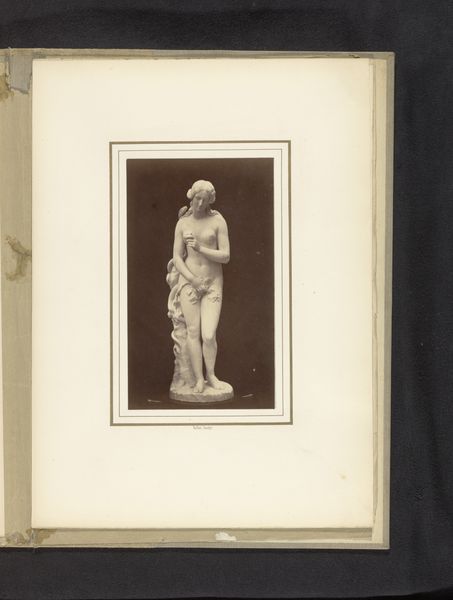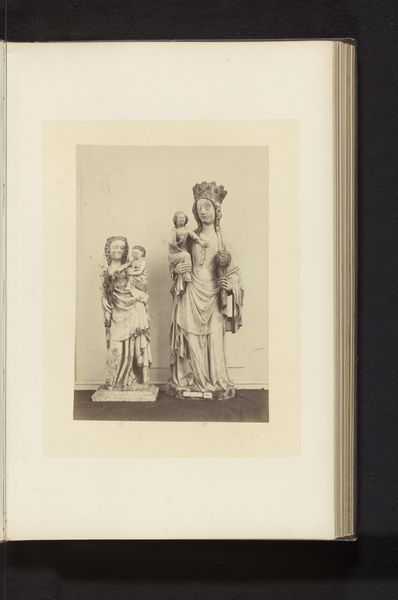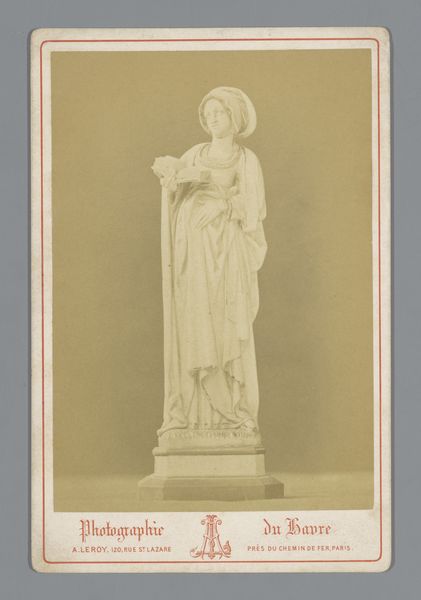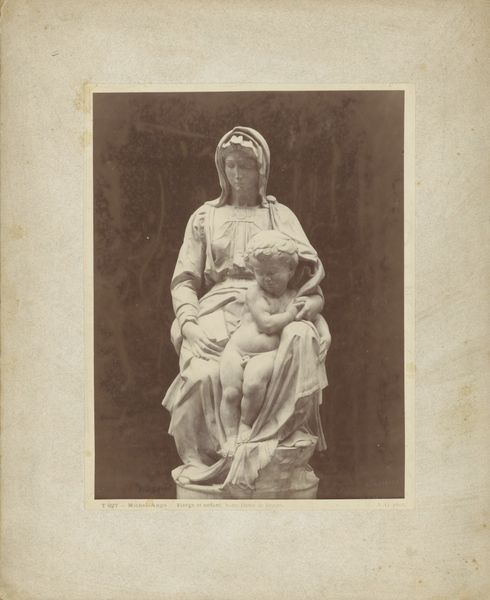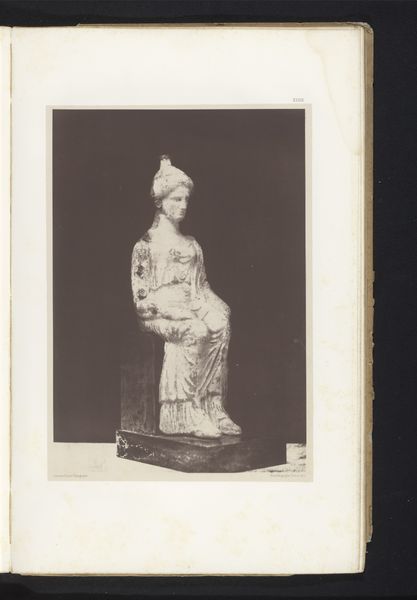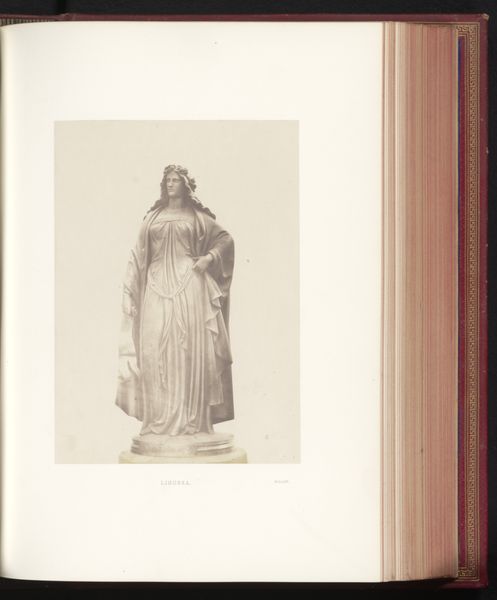
Sculptuur van gekleurd eikenhout van Maria die monniken en nonnen onder haar mantel verstopt, opgesteld op een tentoonstelling over religieuze objecten uit de middeleeuwen en renaissance in 1864 in Mechelen 1864
0:00
0:00
photography, sculpture, wood
#
portrait
#
medieval
#
figuration
#
photography
#
sculpture
#
wood
Dimensions: height 259 mm, width 203 mm
Copyright: Rijks Museum: Open Domain
This colored oak sculpture by Joseph Maes, exhibited in 1864, captures the Virgin Mary sheltering monks and nuns under her mantle. This 'cloak of protection', or Schutzmantelmadonna, embodies the Virgin’s role as protector of the faithful. This motif resonates with earlier depictions of royal figures offering sanctuary, echoing the ancient Roman tradition of rulers extending their cloaks to signify protection. The gesture of sheltering under a protective cloak is deeply embedded in our collective memory. We see this motif in the protective wings of ancient deities, a visual language of comfort and security passed down through generations. Psychologically, it speaks to our innate need for safety, mirroring the parent-child bond, stirring deep, subconscious emotions. This symbol is not static. It has recurred and transformed across different contexts. Here, in Maes’ sculpture, the cyclical nature of these protective symbols emphasizes the enduring human desire for safety. The image shows the Virgin Mary as a powerful force, engaging viewers on a deep, subconscious level.
Comments
No comments
Be the first to comment and join the conversation on the ultimate creative platform.

